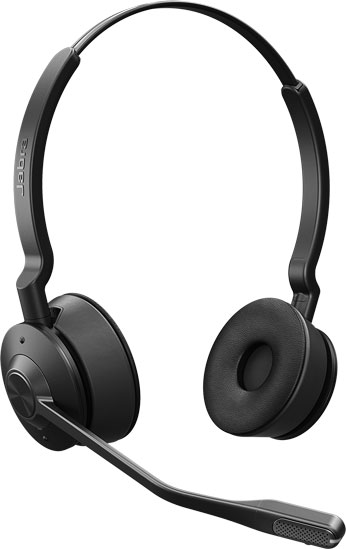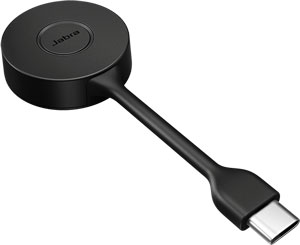In his latest unboxing video, Dylan introduces you to Jabra Engage 55, a wireless headset that uses the secure DECT protocol for communications. It comes with a plug-and-play DECT USB adapter to enable communications wherever you are: in the office, at home, in shared workspaces or cafés, and more. DECT headsets used to require a base station but no longer. You get an adapter with a bendable design to improve durability.
A comfortable, lightweight headset, Engage 55 features a noise-cancelling microphone and speakers optimized for speech.
Check out the unboxing video for Jabra Engage 55 today! Below the video we talk a bit more about why DECT gives the wireless headset real advantages for you.
Why DECT makes Jabra Engage 55 so good
In the world of office headsets, there are two types of wireless headsets: Bluetooth and DECT. We all know Bluetooth, so why does anyone bother with DECT?
In particular, DECT offers three advantages over Bluetooth:
- Extended wireless range
- Wireless spectrum density reduction
- Improved security

Extended wireless range
This one is simple. Jabra Engage 55 offers a wireless range well beyond what a comparable Bluetooth headset can offer: up to 490 feet, depending on obstructions. As a comparison, Jabra Evolve2 55, an excellent headset in its own right, is a Bluetooth headset with a maximum range of 100 feet. In other words, it’s close to 5× the potential range.
By using DECT, Engage 55 lets you wander with your headset on without making you worry about connectivity.
Wireless spectrum density reduction
In most offices today, there are large numbers of wireless devices, most of which use Wi-Fi or Bluetooth.
Wireless technologies use specified ranges of the wireless spectrum, which means there is only so much space in each range for to use. Because so many devices— computers, smartphones, etc. — use Wi-Fi and Bluetooth in the office, the ranges of the spectrum for these two technologies tend to get crowded.
Crowding of the spectrum — spectrum density — can lead to signal loss and other disruptions. So many devices are fighting over the same piece of the pie.
DECT uses a different range of the wireless spectrum from either of these two. This range tends to be significantly less crowded than Wi-Fi or Bluetooth, because there are fewer DECT devices.
Hence, DECT headsets reduce the issues caused by spectrum density that Bluetooth headsets face by offloading devices to a different range of the wireless spectrum. And they have a clearer range of the spectrum for their own communications.

Improved security
Communications security is vital for business today. As implemented by Jabra with Engage 55 (and other headsets), DECT is highly secure.
Here’s how Jabra puts it in a recent security white paper: “256-bit AES encryption and FIPS 140-2 algorithms take call security above and beyond the highest level of DECT Secure step C certification, to protect sensitive customer data when working from home and in the office.” The FIPS 140-2 encryption algorithms are military grade.
One word sums it up: Secure.

